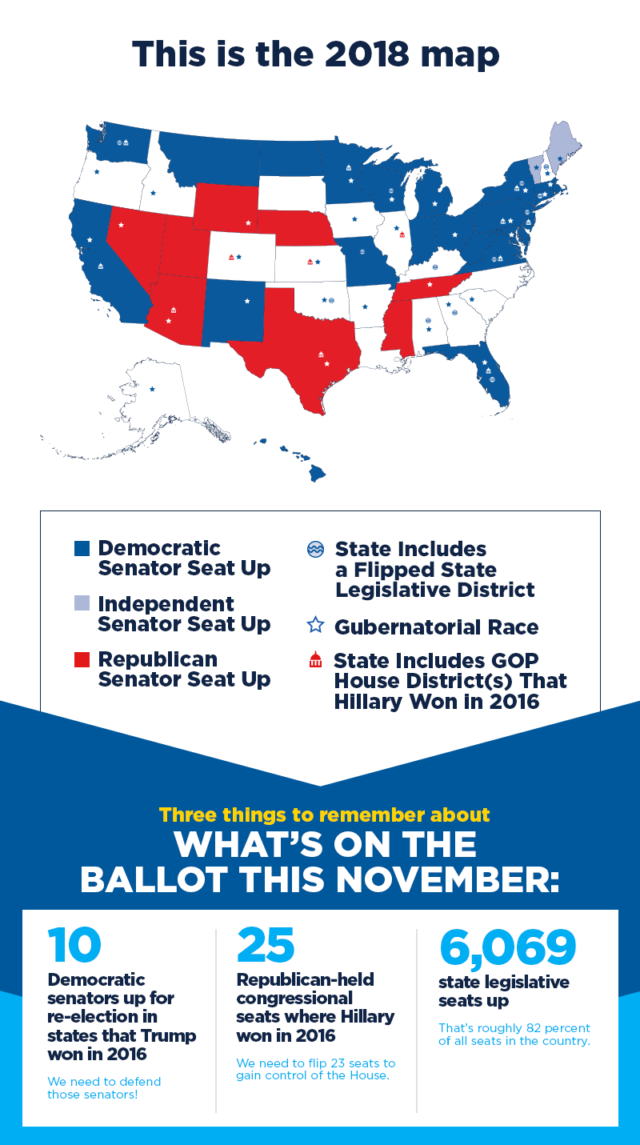

At least, that was the case from 1982 until this year, when an estimated 49 percent of the nation’s voting-eligible population (about 116 million people) cast a ballot, according to a preliminary analysis by the U.S. On average, roughly 40 percent of eligible voters cast a ballot in a midterm. Midterm elections aren’t usually known for high levels of voter turnout. But if the Democratic pickup of 38 seats in the House holds true, that number will be even larger than in 2006 - the last time Democrats regained the House from Republicans, acquiring 32 seats. The chambers have moved in opposite directions 10 times since 1926, and what we’re seeing in 2018 is largely reflective of just how tough the Senate map was for Democrats. The chambers “swung” in opposite directions, as Democrats gained seats in the House (they’re on track for a net gain of 38 by our estimates) and lost seats in the Senate (a net of one seat at the moment, but that number could change after the Florida race is decided and Mississippi holds its runoff). Notably, the youth share of the vote in Georgia was 13%, slightly higher than the national rate.This midterm election saw an unusual trend, though it wasn’t unprecedented. Voters ages 30-44 backed Warnock 56% to 41%, while voters over 45 gave a majority of their votes to GOP challenger Herschel Walker. In the Georgia Senate race that will go to a runoff election, with less than 1% separating the candidates, youth backed Democratic incumbent Senator Warnock 63% to 34%.Voters 30-44 also preferred Evers by a slimmer 55% to 44% margin, while voters over 45 backed the GOP candidate. 30% for Republican challenger Tim Michels. Young voters gave Evers extraordinary support: 70% vs. In the Wisconsin Governor election, which we had ranked as the #1 race where the youth vote could influence the outcome, Democratic Governor Tony Evers won reelection by a slim margin, 51% to 48%.

In the Pennsylvania Senate race, where Democrat John Fetterman won by a slim 3% margin, youth ages 18-29 preferred Fetterman 70% to 28%, compared to 55% to 42% among voters ages 30-44, with voters over 45 preferring Republican candidate Dr.In close elections decided by a few percentage points, young voters’ double-digit vote margin for Democrats can swing a race in which older voters backed the Republican candidate: (Note: the youth share of the vote is the percentage of all votes cast in a race that were cast by young people, ages 18-29.) Based on data from states where exit polls were conducted, here’s what the youth vote choice and youth share of the vote looked like in key electoral battlegrounds. Youth participation and party preference can also vary by state.
#2018 midterm elections map full#
Upward Trend Since 2014: All but one state for which we have data (Louisiana) had higher youth turnout in 2022 than in 2014, suggesting a broad trend of increased youth voting over the past decade.Įxplore state-by-state youth turnout in the map below, and find our full data and analysis here. In those first three states, Democrats won competitive statewide races for governor and/or U.S. Many of the states with lower turnout do not have these policies in place or have restrictions like voter ID laws.įour States Surpassed 2018: Michigan, Pennsylvania, New York, and Arkansas were the only states to have a higher youth turnout in 2022 than in 2018. Lowest Turnout States: Oklahoma, Alabama, Indiana, West Virginia, and Tennessee all had youth turnout at or below 15%.Įlection Policies Matter: Many of the states with the highest youth turnout have policies like automatic and same-day registration that make it easier for young people to register and vote. Top Turnout States: Michigan had the highest youth turnout in the country (37%), with Minnesota, Maine, Oregon, and Colorado also above 30%. National Youth Turnout: 23% - That's lower than in the historic 2018 cycle (28%) which broke records for turnout, but much higher than in 2014, when only 13% of youth voted. These estimates are based on voter file data aggregated by Catalist, as opposed to our earlier, exit-poll based estimates from immediately after the 2022 election.

In April 2023 CIRCLE released its final estimates of youth voter turnout nationally and for 39 states. Elections are a valuable opportunity for young people across the country to make their voices heard, support action on issues they care about, and grow as active voters and leaders in our democracy. Our research on the youth vote in the 2022 midterm election highlights how young people used their power, and the work that's still needed to ensure all youth are ready to participate in elections.


 0 kommentar(er)
0 kommentar(er)
